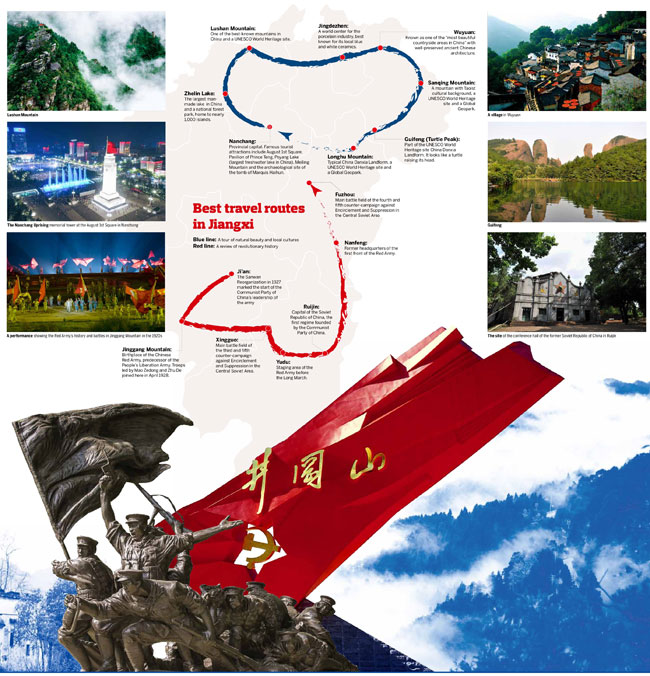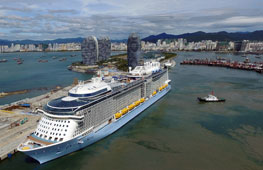Best travel routes in Jiangxi
Blue line: A tour of natural beauty and local cultures
Nanchang: Provincial capital. Famous tourist attractions include August 1st Square, Pavilion of Prince Teng, Poyang Lake (largest freshwater lake in China), Meiling Mountain and the archaeological site of the tomb of Marquis Haihun.
Zhelin Lake: The largest manmade lake in China and a national forest park, home to nearly 1,000 islands.
Lushan Mountain: One of the best-known mountains in China and a UNESCO World Heritage site.
Jingdezhen: A world center for the porcelain industry, best known for its local blue and white ceramics.
Wuyuan: Known as one of the “most beautiful countryside areas in China” with well-preserved ancient Chinese architecture.
Sanqing Mountain: A mountain with Taoist cultural background, a UNESCO World Heritage site and a Global Geopark.
Guifeng (Turtle Peak): Part of the UNESCO World Heritage site China Danxia Landform. It looks like a turtle raising its head.
Longhu Mountain: Typical China Danxia Landform, a UNESCO World Heritage site and a Global Geopark.

Red line: A review of revolutionary history
Ji'an: The Sanwan Reorganization in 1927 marked the start of the Communist Party of China's leadership of the army.
Jinggang Mountain: Birthplace of the Chinese Red Army, predecessor of the People's Liberation Army. Troops led by Mao Zedong and Zhu De joined here in April 1928.
Xingguo: Main battle field of the third and fifth counter-campaign against Encirclement and Suppression in the Central Soviet Area.
Yudu: Staging area of the Red Army before the Long March.
Ruijin: Capital of the Soviet Republic of China, the first regime founded by the Communist Party of China.
Nanfeng: Former headquarters of the first front of the Red Army.
Fuzhou: Main battle field of the fourth and fifth counter-campaign against Encirclement and Suppression in the Central Soviet Area.













